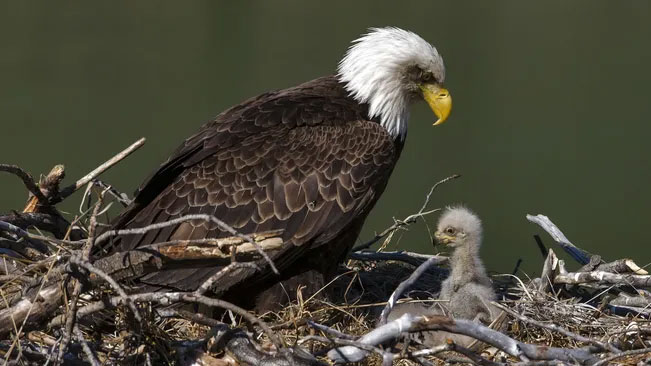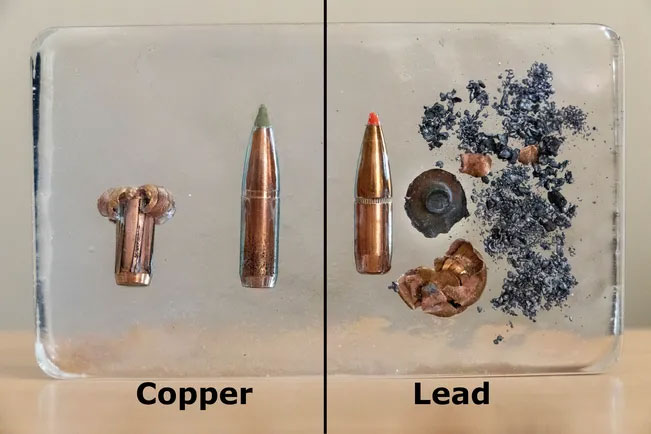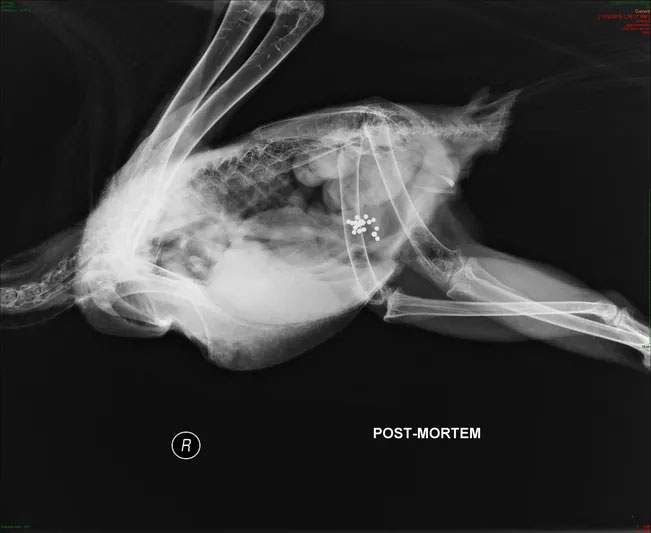In the United States, winter is the peak season for hunters. Amid the snow-covered forests, hunters shoot elk, leaving behind carcasses that eagles come to scavenge. This situation might not be serious if the leftovers were merely animal meat, but unfortunately, they often contain lead fragments from bullets.
According to a study published on Thursday (February 17) in the journal Science, researchers discovered high rates of lead poisoning in two of the most common eagle species in the U.S., the Bald Eagle and the Golden Eagle, from 2010 to 2018. Their findings indicate that eagles are consuming lead fragments from bullets found in the carcasses left by hunters.

Lead poisoning rates in Golden Eagles and Bald Eagles in the U.S. are very high.
Todd Katzner, a wildlife biologist from the U.S. Geological Survey and co-author of the study, told Insider: “Every time a lead bullet hits an elk, it shatters into many pieces. Just a small fragment the size of a pinhead is enough to be fatal for the lord of the skies.”
The researchers examined blood, bones, liver, and feathers from over 1,200 eagles across 38 states in the U.S. Among those samples, 47% of Bald Eagles and 46% of Golden Eagles showed signs of chronic lead poisoning. Birds that are exposed repeatedly or chronically to lead are at high risk of suffering from weakness while flying, seizures, or paralysis.

Copper bullets (left) compared to lead-core bullets (right) before and after impact
Particularly, lead poisoning poses a risk of hindering the development of eagle populations. The study indicates that lead poisoning is responsible for slowing the annual population growth of Bald Eagles by about 4% and Golden Eagles by 1%.
“Over a 20-year period, thousands and thousands of eagles are being removed from the population,” Katzner stated.
Currently, both Bald Eagles and Golden Eagles are not classified as endangered species. The population of Bald Eagles in the U.S. has increased more than fourfold since 2009, from about 72,000 to 317,000. However, the population of Golden Eagles remains relatively small—around 30,000—and is at risk of decline.
“Conservation efforts should focus more on Golden Eagles because this population is much smaller and is in a more precarious state,” the biologist remarked.
Scientists have been aware of lead exposure in eagles for several decades. “Over time, the number of eagles brought to rehabilitation facilities has been increasing. When X-rays are performed on sick birds, the veterinary team finds lead fragments in their gastrointestinal tracts,” Katzner explained.

X-ray of a Bald Eagle that ingested lead fragments
However, until the recent study, researchers had not been able to determine the extent of danger or the prevalence of lead exposure among American eagles.
“We sampled from Alaska down to Florida, from Maine to California, so our sample information is truly diverse, enhancing the generalizability of the experiment,” Vince Slabe, a wildlife biologist at the nonprofit Global Wildlife Conservation and co-author of the study, noted.
Slabe mentioned that adult eagles have a higher rate of chronic lead poisoning than juvenile eagles. This is because they hunt more frequently. Some other eagles suffer from acute poisoning—exposure to high levels of lead over a short period. The study did not delve into the lifespan of this group, but eagles suffering from acute lead poisoning often die faster than their peers, sometimes before showing symptoms.
Acute lead poisoning is particularly common in winter when seasonal food sources like fish, rabbits, and squirrels become scarce. At the same time, changes in foraging habits also increase the likelihood of lead exposure. Eagles stop hunting and start scavenging more. Up to 33% of Bald Eagles and 35% of Golden Eagles in the study showed signs of acute lead poisoning.
Researchers also ruled out the possibility of lead exposure from being shot by hunters. “A small number of eagles in this study were shot, but at the shooting site, we never sampled tissue from there,” Katzner stated.
Slabe, along with many animal protection organizations, hopes that more hunters will be willing to switch from lead bullets to non-lead alternatives like copper bullets to avoid harming the ecosystem.


















































